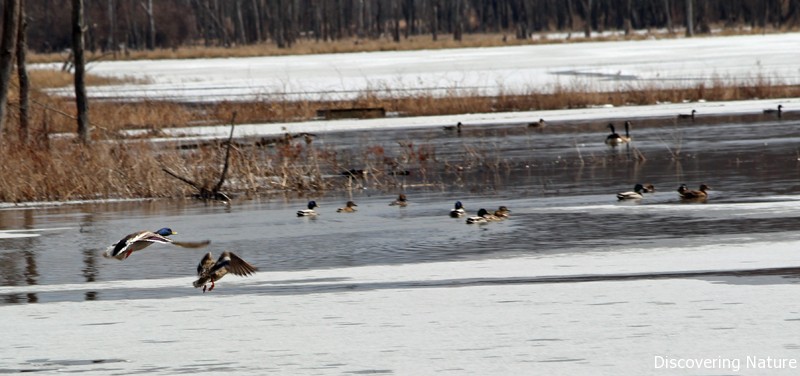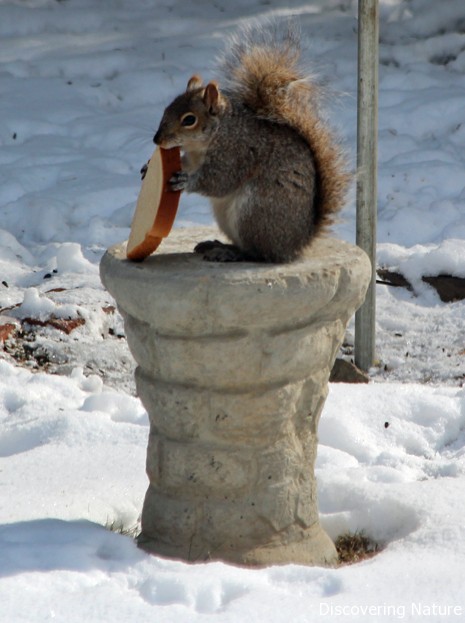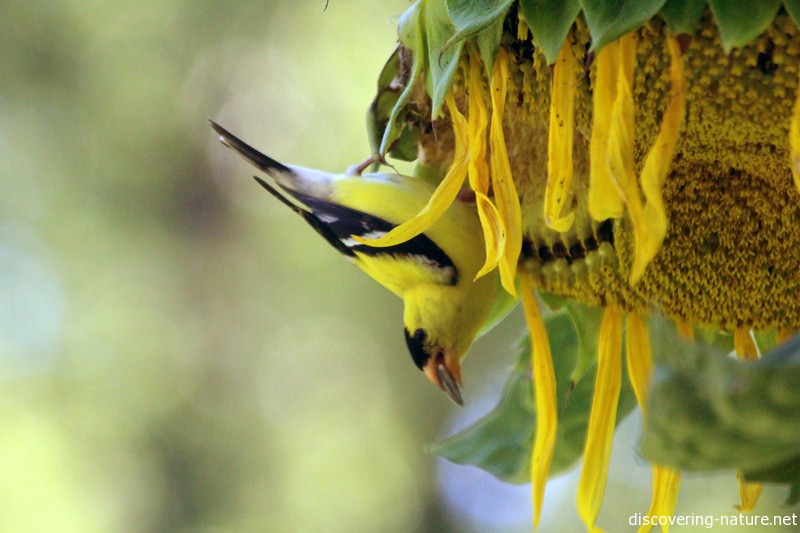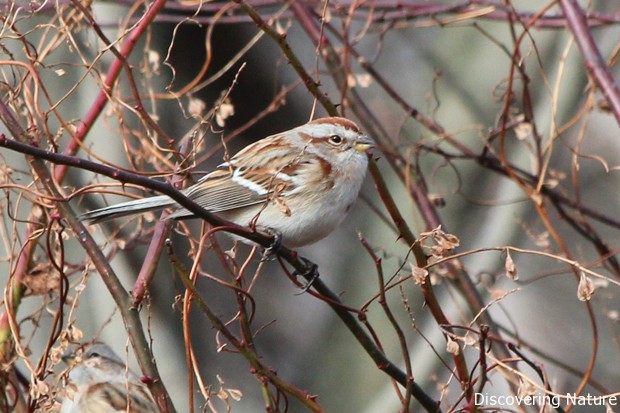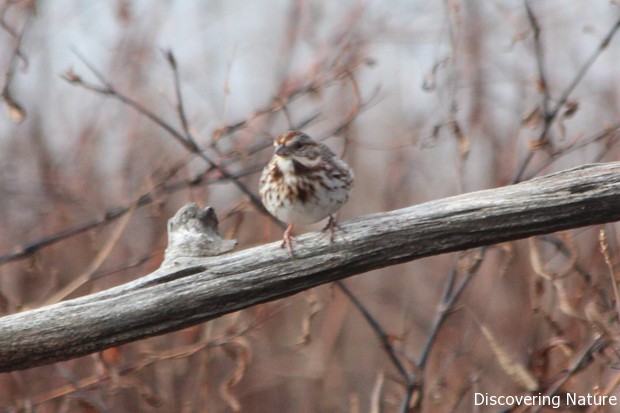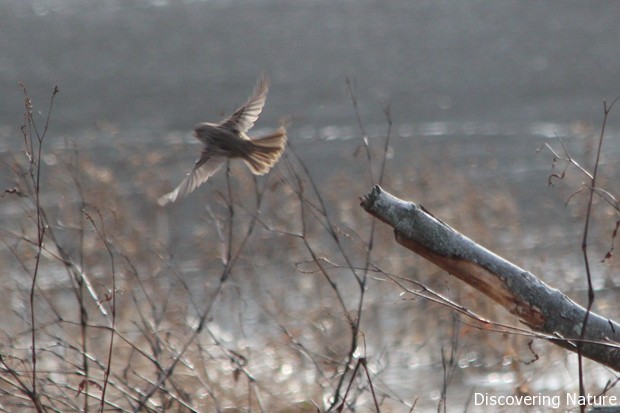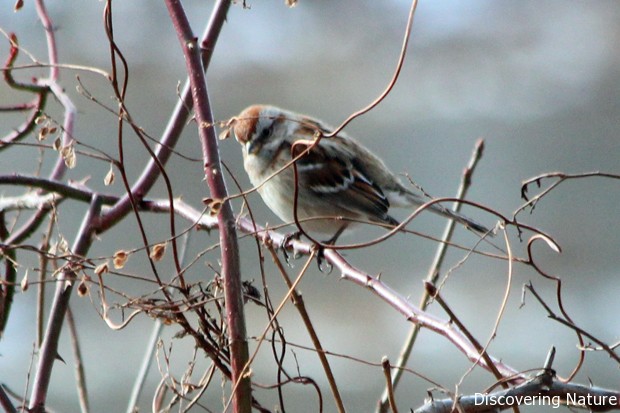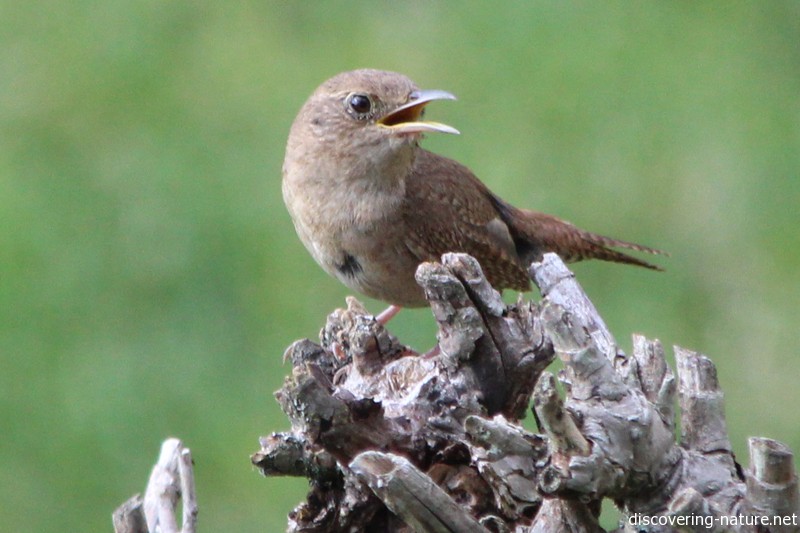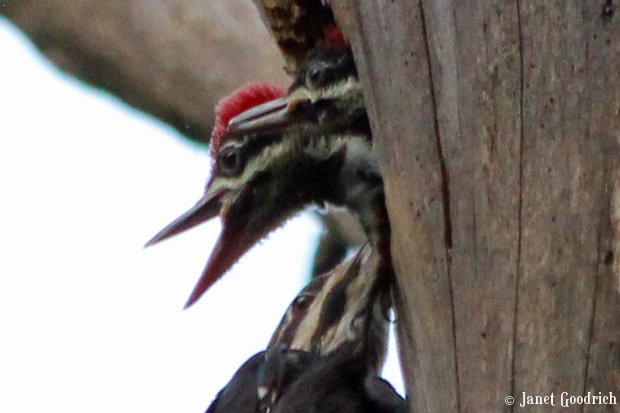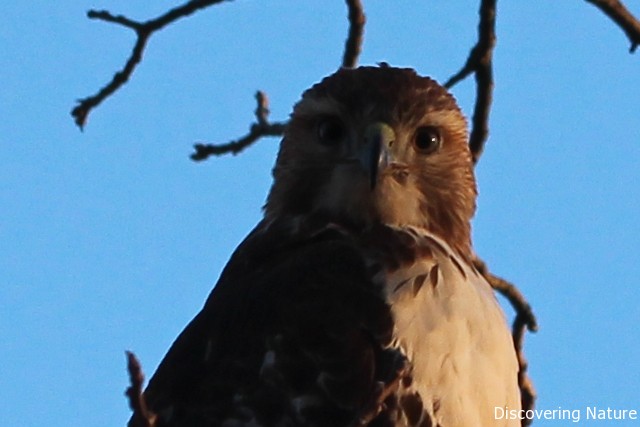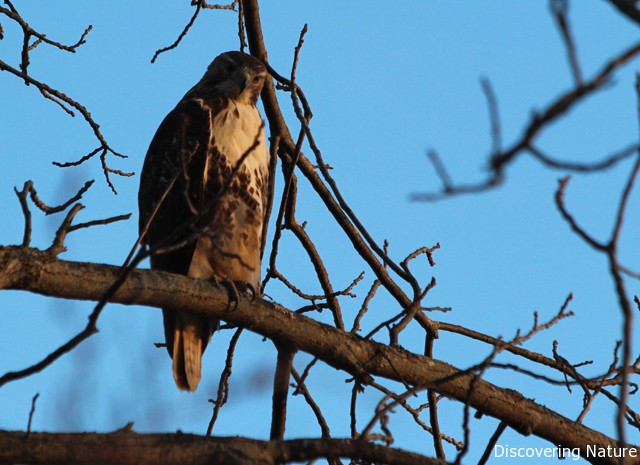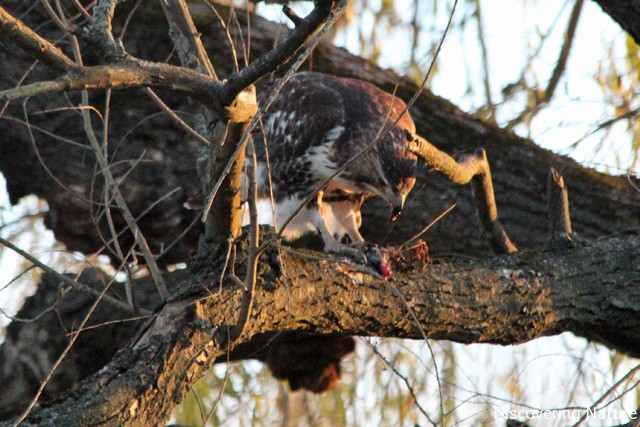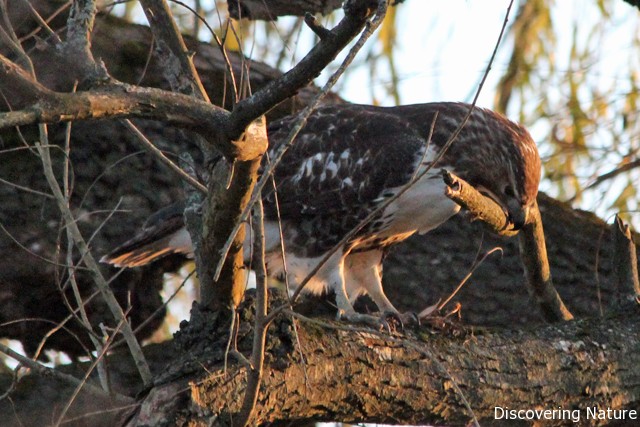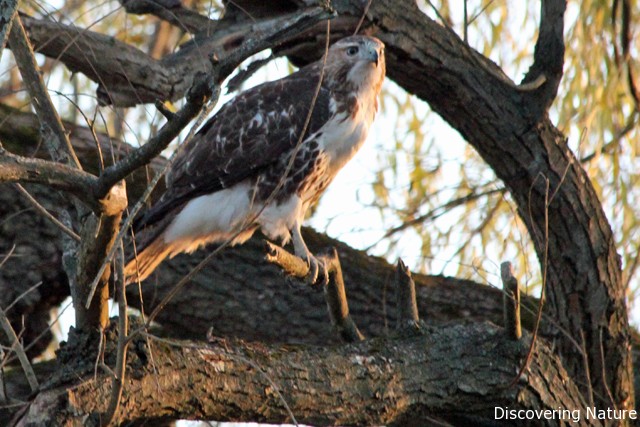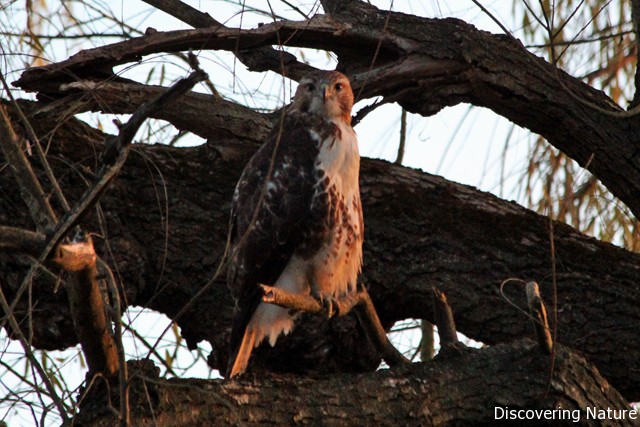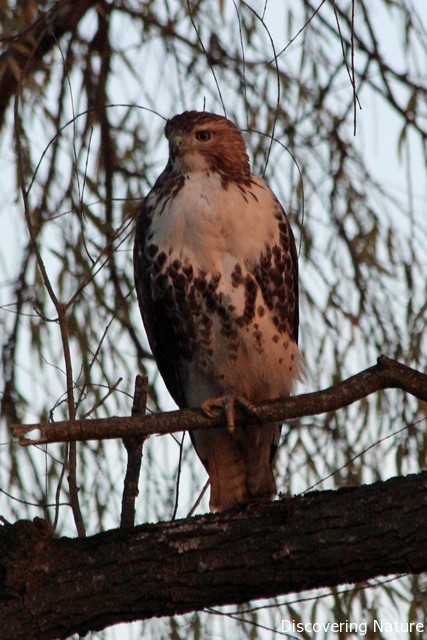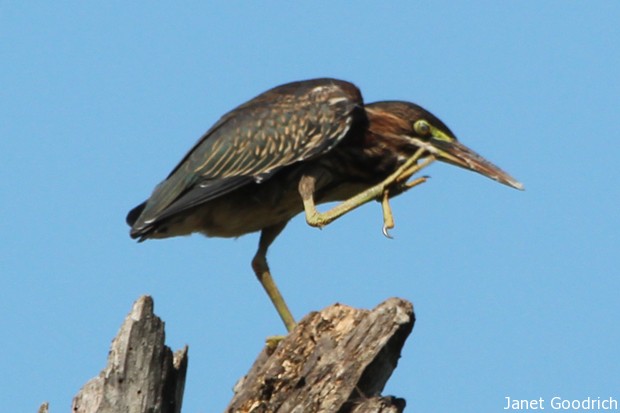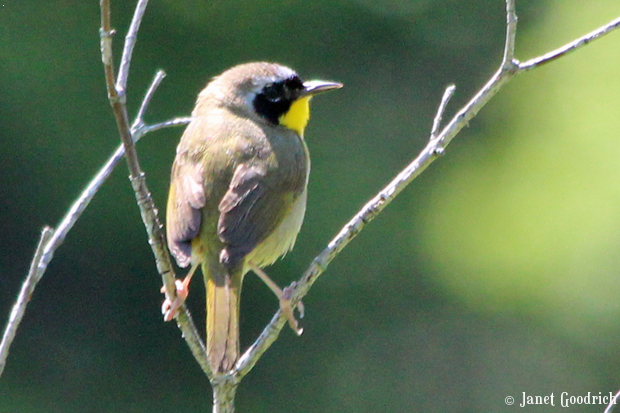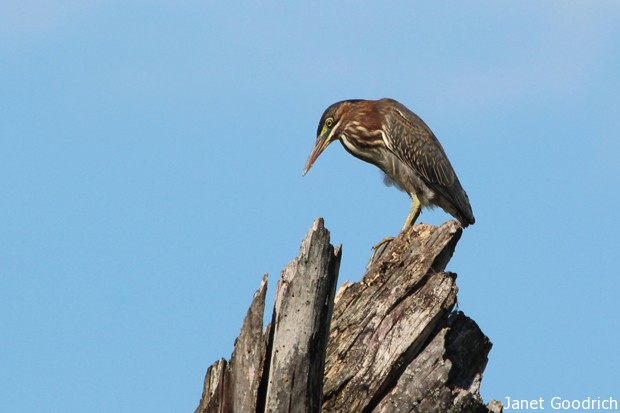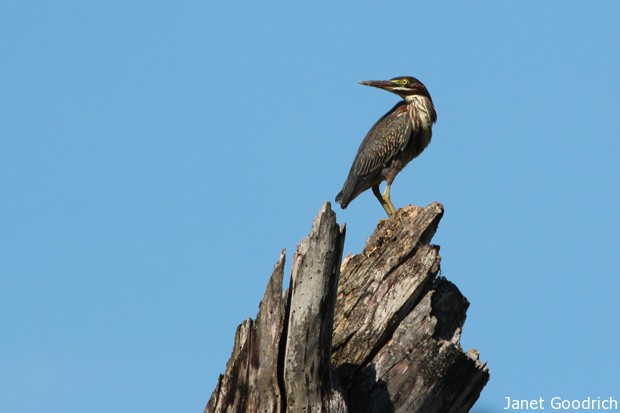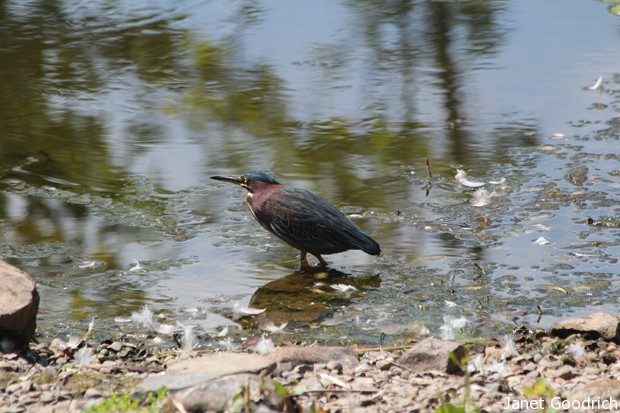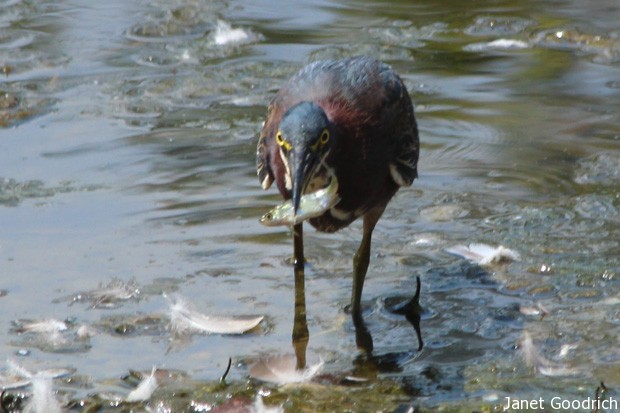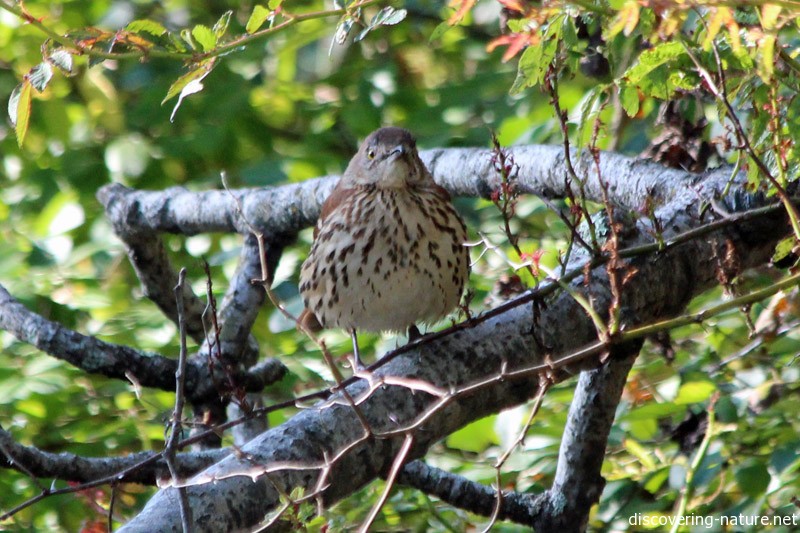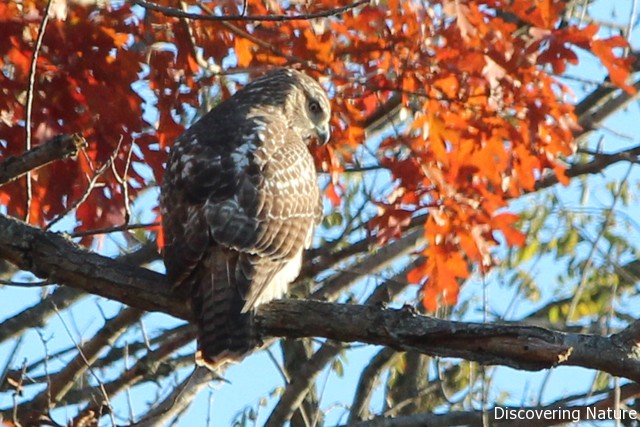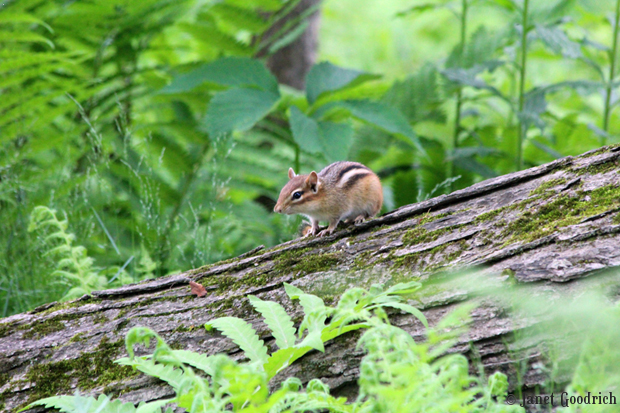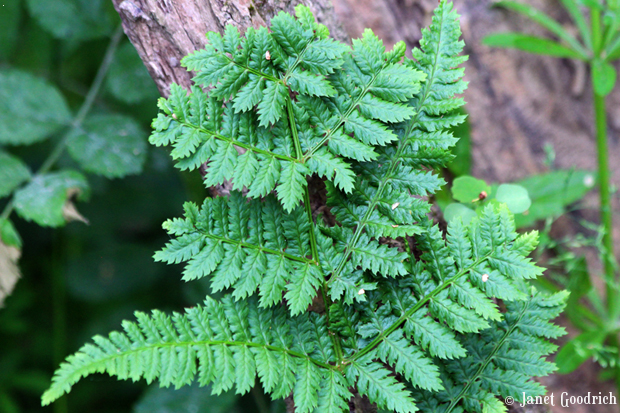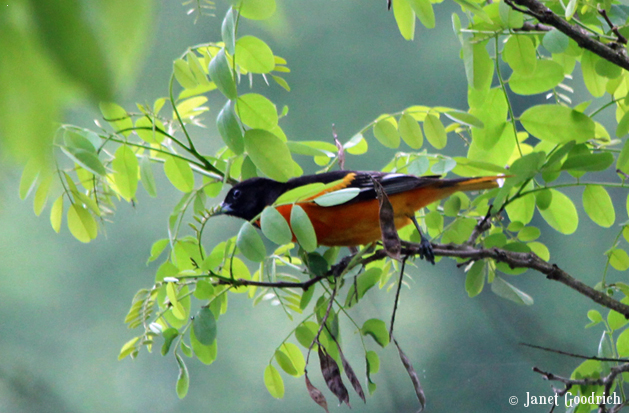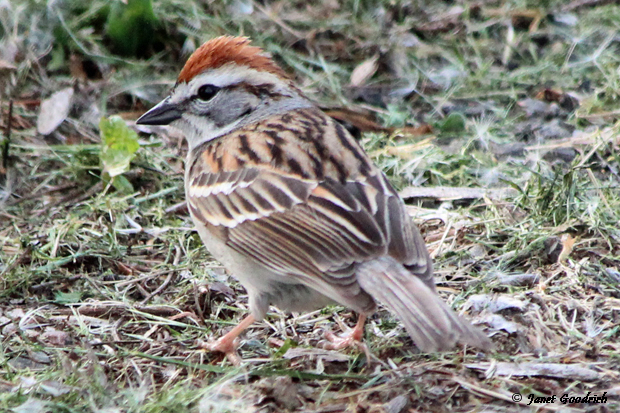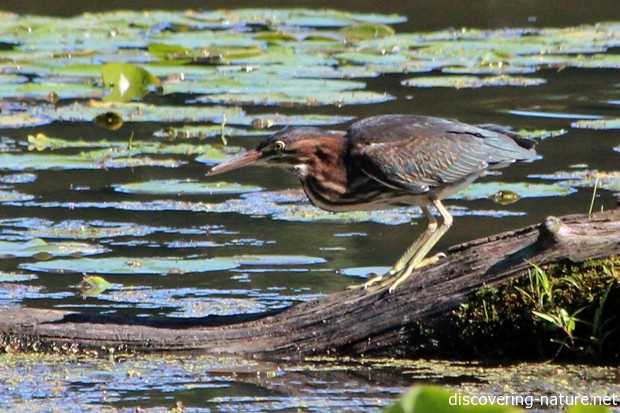-
Recent Sights
Mostly our recent walk at a wetland was about water birds and evidence of creatures not seen. Like this beaver mark from last year — freshly chewed this year.
Or these pileated woodpecker excavations at the edge of the parking area. Wouldn’t it be great to come upon the woodpecker at work?
In the raptor category, we’ve seen a pair of American kestrels in the same field for several weeks running. One of these days I’ll get a good picture!
My daughter and I saw this hawk capture a mouse as we were driving. I pulled over and she was able to get a nice picture — not nice for the mouse, though.
In the back yard we’ve enjoyed seeing the squirrels. Mostly they feast on maple buds, but once in awhile they get a piece of stale bread. This fellow is on the base of the bird bath, where he at least enjoys the privilege of eating NEAR the bird feeder — though he’s continually foiled in efforts to get INTO it.
-
Plain Brown Packages
The girls and I took a walk at the local pond where we saw the redtail a month or so ago. He flew by a short distance from us but didn’t put on a show like he did last time. But it was fun to see (and hear) a flock of tree sparrows peeping as they fed in the bushes accompanied by goldfinches, cardinals and white-throated sparrows. The bushes were full of rustlings and twitterings, and the white-throated sparrows were in top form flipping over leaves on the forest floor.
Sparrows are thought of as plain birds, but seen up close they never fail to win my admiration. These tree sparrows have such a beautiful combination of browns and golds. They seem like flying chipmunks. I never noticed the yellow on the lower part of their beaks before.
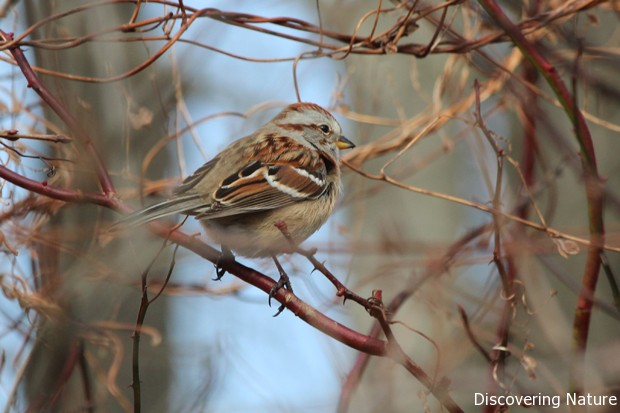 There was a song sparrow too, in the same place I’ve seen her before.
There was a song sparrow too, in the same place I’ve seen her before.Not far away was some fresh beaver work. Younger Daughter was convinced we’d startled the beaver because the tree “had spit on it.” 🙂
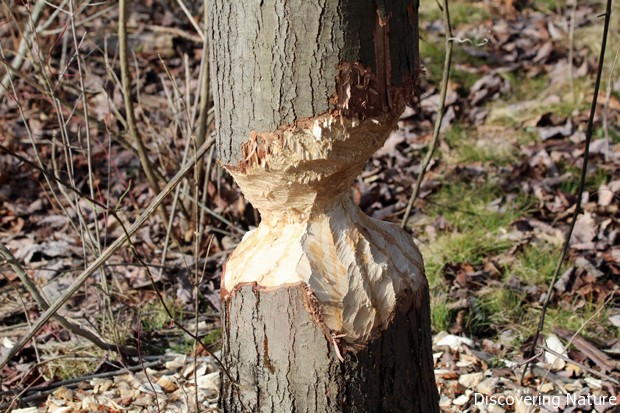 There are two large beaver lodges on the pond, as well as a number of muskrat homes. This lodge seemed to be where the numerous saplings and bush stems the beavers has nipped off were being taken.
There are two large beaver lodges on the pond, as well as a number of muskrat homes. This lodge seemed to be where the numerous saplings and bush stems the beavers has nipped off were being taken.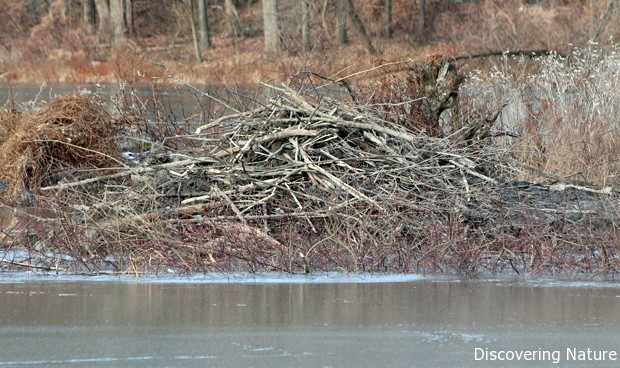 It was cold, but we enjoyed seeing these reminders of creatures busy about the work of survival. It almost seemed like they enjoyed seeing us too. We certainly gave the birds something to gossip about.
It was cold, but we enjoyed seeing these reminders of creatures busy about the work of survival. It almost seemed like they enjoyed seeing us too. We certainly gave the birds something to gossip about.“Dotty the Tree Sparrow spends the winter here. He left for his home in the Far North about the time you took it into your head to wake up.”
“Why do you call him Dotty?” asked Johnny Chuck.
“Because he has a little round black dot right in the middle of his breast,” replied Peter. “I don’t know why they call him Tree Sparrow; he doesn’t spend his time in the trees the way Chippy does, but I see him much oftener in low bushes or on the ground. I think Chippy has much more right to the name of Tree Sparrow than Dotty has. Now I think of it, I’ve heard Dotty called the Winter Chippy.”
“Gracious, what a mix-up!” exclaimed Johnny Chuck. “With Chippy being called a Tree Sparrow and a Tree Sparrow called Chippy, I should think folks would get all tangled up.”
“Perhaps they would,” replied Peter, “if both were here at the same time, but Chippy comes just as Dotty goes, and Dotty comes as Chippy goes. That’s a pretty good arrangement, especially as they look very much alike, excepting that Dotty is quite a little bigger than Chippy and always has that black dot, which Chippy does not have. Goodness gracious, it is time I was back in the dear Old Briar-patch! Good-by, Johnny Chuck.”
(Thornton W. Burgess, Burgess Bird Book, chapter 4)
-
Amazing
The girls and I watched this hawk hunting for awhile at Brick Pond today. He saw us too. (From here on out I’m calling it “he,” because “it” seems not quite right…)
Older Daughter showed great patience. She wanted to see him take off, or pounce on something. Eventually her patience paid off; he crossed the water and we lost sight of him — till he flew into a tree on our side, about five feet from us.
He sat there through a battery change in my camera, and my daughters’ whispered exultation. Then he pounced on a mouse right in front of us, and took it to a tree next to our car. It was as if he wanted his activities documented.
He polished off the mouse in about 3 minutes. I thought of the line from The Lion, The Witch and the Wardrobe: “There’s nothing better than fish that were alive a half hour ago, and came out of the pan half a minute ago.” But in this case, it’s “There’s nothing better than a mouse that was alive a minute ago, and is now in my crop.”
Then he wiped his beak and jumped handily to a post-meal perch.
It was unusual… I remember watching a documentary about Pale Male, and how close people would come to the Central Park hawks — and how foolish that was. But in any case we weren’t harmed; he came to us, rather than vice versa. And there were no visible injuries, and no problems with his hunting ability — that’s for sure.
We left him looking regal in the waning sunlight.
-
Green herons
It’s been pretty quiet around here lately. I’ve reduced my screen time quite a bit this summer and experienced corresponding benefits. But I’ve continued to observe and enjoy some favorite haunts during this all-too-brief (here in the Northeast) warm season.
One bird I started really noticing last summer is the green heron, and I’ve had some good opportunities to photograph some this year. At one pond here locally, there must have been a successful nesting pair, because young herons have been marauding together, discussing everything and everyone. In the process they’ve posed nicely for some pictures.
This bird took a break from looking lordly atop its snag, and scratched an itch. You can see its nictitating membrane in this pic.
Then it flew away. It looks awkward in flight, maybe because its tail is so short.
Another bird that posed for photos was this next green heron, which the girls and I watched through the windows at Sapsucker Woods. It seems almost too easy, this kind of nature study. In this setting, the bird’s small size next to the crowd of talkative ducks was striking. It was hunting with great concentration.
Like any good fisherman, it posed for a moment with its catch. Then it turned the minnow neatly and swallowed it, head first. It was interesting to me to see the disturbance in the water’s surface increasing as the heron waited and then snatched. I’m not sure if the minnows were reacting to the heron, or if the heron was merely watching the minnow activity as the group approached it under the water.
So much of “nature study” involves watching animals simply eating or taking care of young. They are just surviving, doing the same ordinary things we humans do. But they have the intrigue of being different species, highly skilled and adapted.
-
Walk at the Pond
The sun was out yesterday morning, and I urged the girls on in their schoolwork, dangling the carrot of a walk in the sun. They rose to the challenge, and we headed off in good time.
First to sound the alarm was this guy: “Humans! Humans!”
Apparently he was ignored, because just beyond him we saw a couple of green herons.
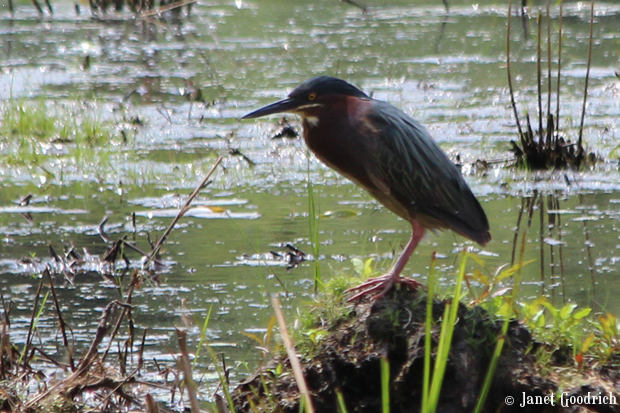
This one looked pretty typical... 
...till the wind blew and gave it a punk makeover. There was a whole cavalcade of geese camped out on the berm across the pond. They made an impressive racket as they took off. We could almost feel the wind from their beating wings.
There were some other water birds around too.
There were several great blue herons there — 4 or 5. They may be feeding young at the heronry down the river.
The bracken was particularly lush…
And there were some wildflowers around. Learning the names is helping me to feel more like I belong in this place.
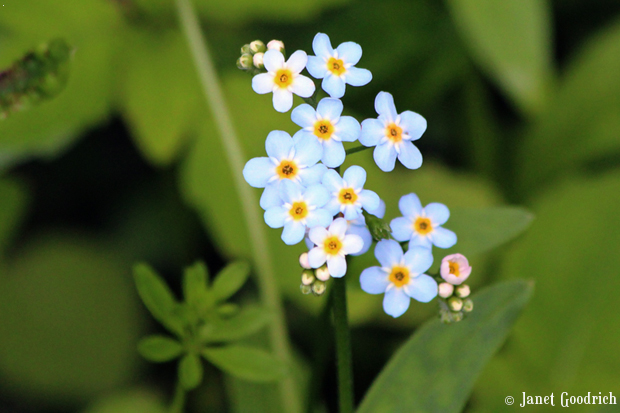
Forget-me-nots 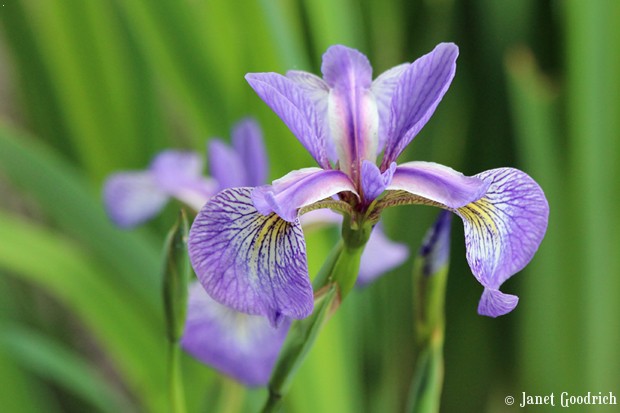
Blue flags 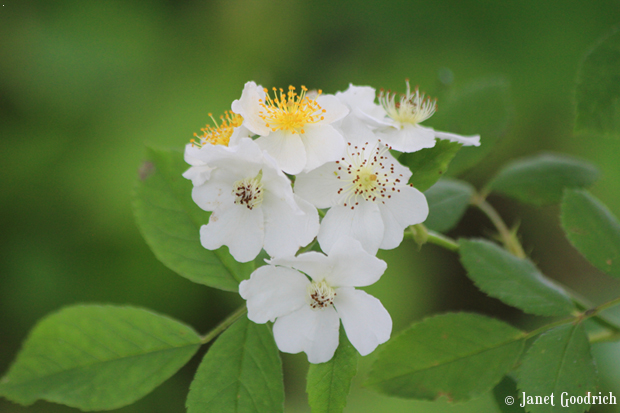
Bramble (I think) 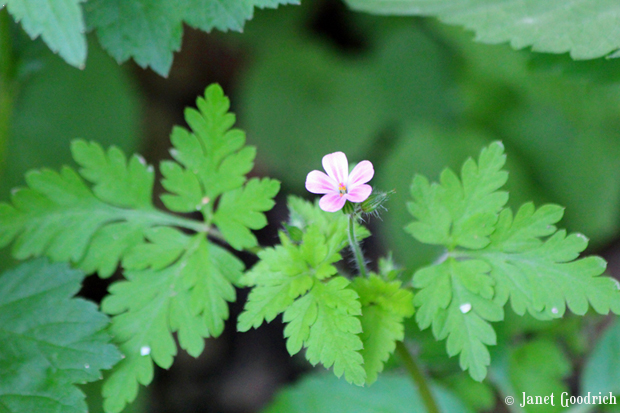
Mystery flower Back at the car, the oriole that usually hangs out in Old Man Willow was humming his way through lunch. I thought that the Burgess Bird Book named the oriole “Glory,” but it’s actually “Goldie.” I prefer Glory. It doesn’t get any more glorious than this colorful bird with his agreeable warble.
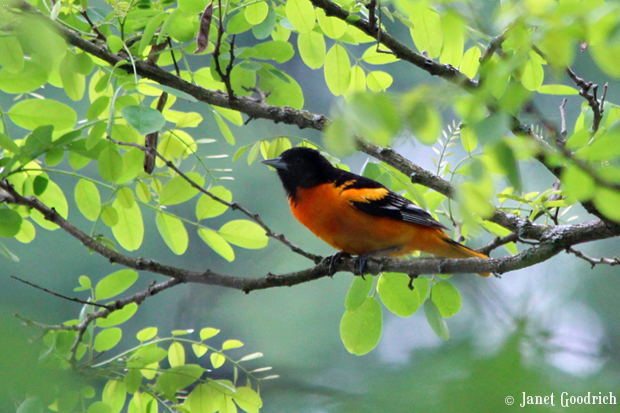
Glory the Oriole By then the sun was retreating behind a bank of clouds, so the flash of fire from Mr. Oriole was all the more welcome.
When we got home, Younger Daughter requested tree swallow coloring pages. Older Daughter requested a library book on caring for injured robins (for reasons I’ll share in a later post). I’ve been slacking on official nature journal pages, but I think we should probably get back into them. They’re not necessary for learning, I don’t think, and only sometimes are they an aid to seeing. But they do document the experiences of our various walks together. Someday I want the girls to have them to look back through. Once they learn the name of a flower or the habits of a bird, they will remember. But the particular treasures of particular walks may fade or get mixed up over time.
